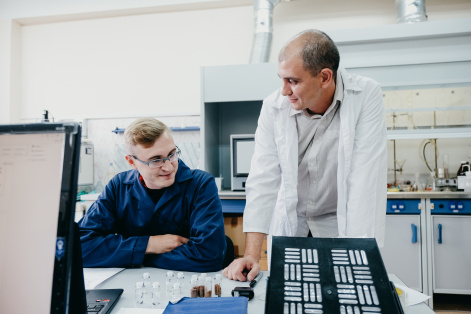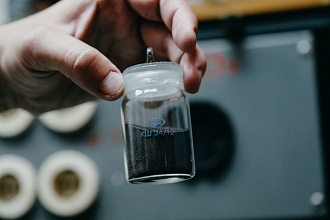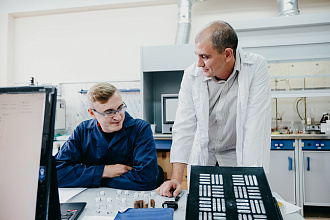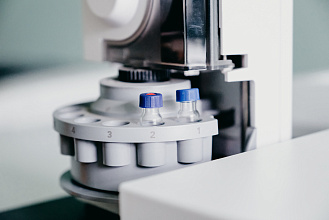Krasnoyarsk scientists brought soil samples from the area of environmental disaster in Norilsk
10 September 2020 г.

Now members of one of the three teams of Krasnoyarsk scientists, specialists from the Institute of Chemistry and Chemical Technology SB RAS, are analyzing bottom sediments and soil. During the expedition, the researchers took several dozens of samples in the coastal zone of rivers and lakes. Later, about fifty more samples obtained as a result of soil drilling by colleagues from other institutes will be delivered to the laboratory. Sampling were performed from Norilsk to the Kara Sea.
The main goal of the field work is to study the ecological environment of the area and work out proposals and recommendations on the best environmentally friendly solutions for the activities of industrial companies in the Arctic region.
“We took the samples starting from the thermal power plant, where the accident occurred, along the rivers where the pollution spread. My team stayed in the north for two weeks. As a result, we will be able to assess the contamination before and after the filters and understand how effective the booms and sorbents installed in connection with the accident are ”, - Andrey Skripnikov, junior researcher at the Institute of Chemistry and Chemical Technology SB RAS, shares the details of the field work.
At this stage, the frozen samples brought from Norilsk are being dried. Scientists must prepare the necessary materials for conducting experiments and sorbents for separating the oil fractions. Using conventional techniques in such studies, only four polyaromatic hydrocarbons (PAHs) can be determined. Krasnoyarsk chemists are planning to use the updated European methodology. As a result, the analysis will be done for 16 polyaromatic hydrocarbons.
The main sources of discharges of man-made PAHs into the environment are enterprises of the energy complex, road transport, chemical and oil refining industries. Almost all man-made sources of PAHs are based on thermal processes associated with the combustion and processing of organic raw materials: oil products, coal, wood, garbage, food, tobacco, etc.
In their work, scientists use high-precision gas chromatography, allowing one to determine not only the presence of pollutants, but also their concentration. Scientists note that their work is complex. The task of chemists is to quantify the content of petroleum products. The Krasnoyarsk biophysicists also participated in sampling bottom sediments and soil. They collected living inhabitants of reservoirs. Later, chemists and biophysicists will compare the results and draw a conclusion on the impact of the pollution on the environment.
“It was a very interesting expedition. Of course, we were all impressed by the harsh beauty of northern nature, incredibly beautiful rivers and lakes, and at the same time the unusual absence of vegetation. From a professional point of view, we managed to apply many techniques in practice, exchange experience with colleagues. It was in the 70s of the last century when such a large-scale study in this region was carried out last time. Now we will obtain important data on the technogenic impact in the Arctic, ”says Andrey Skripnikov.
The test results will be ready in about a month and a half. Based on the data obtained, it will be possible to track the spread of oil products, assess the degree of pollution of these areas. In particular, scientists will assess the amount of carcinogenic substances in the soil and bottom sediments that affect living organisms.
Source: Science in Siberia.
Share:






